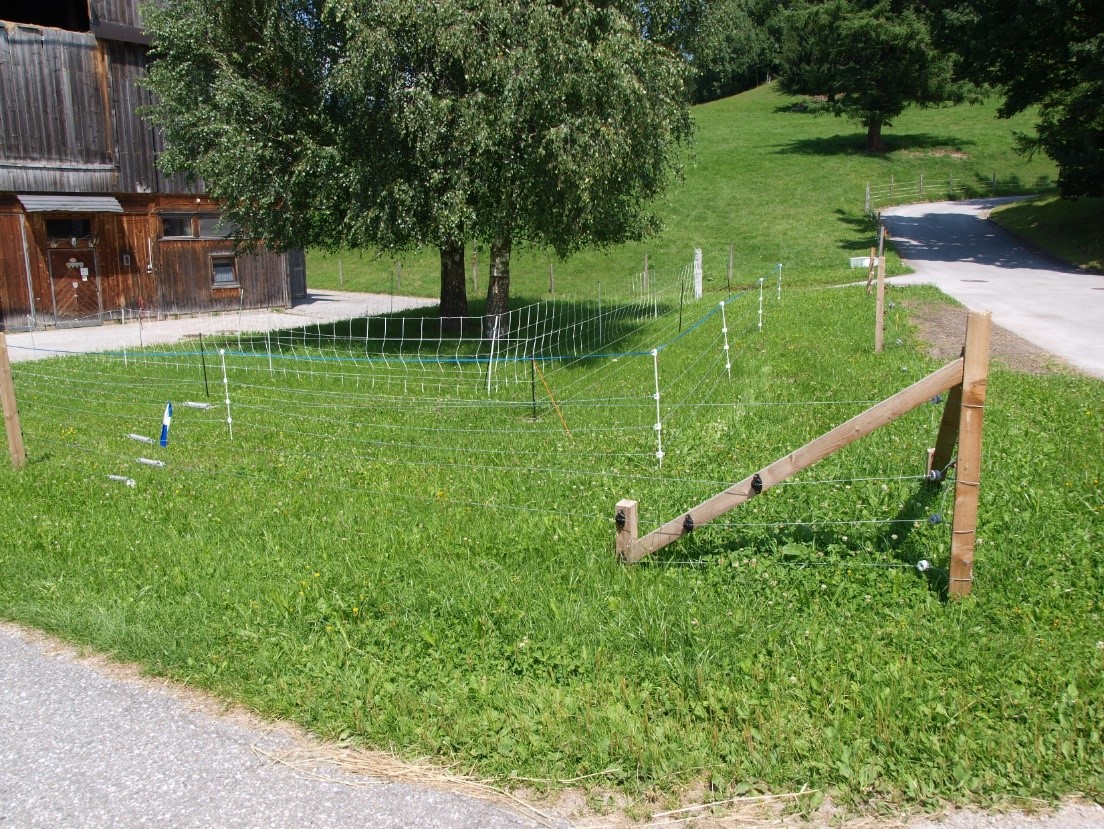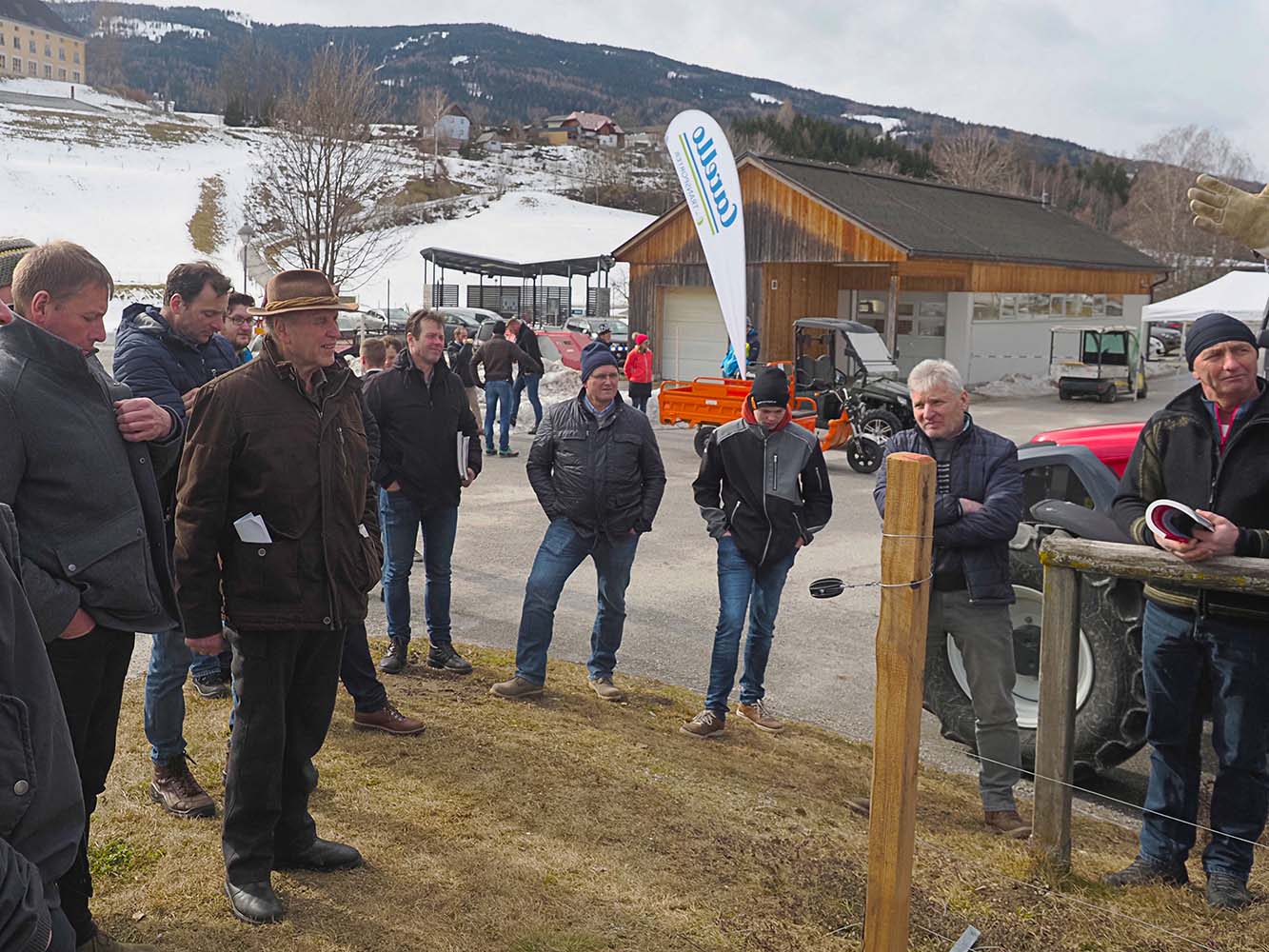A fence provides boundaries, gives us security for our animals and offers additional protection from predators. A lecture was given on these topics at the “Electric Fence Action Day” at the HBLFA Raumberg-Gumpenstein.
While barbed wire used to be used everywhere, today an electrified fence with wire or strands is considered modern. An electric fence is flexible in its application: It can be used as a permanent fence as a border or for paddocks, but also for short-term boundaries, depending on the requirements for herding safety and the need for protection from wolves or golden jackals. The risk of injury to animals and people from an electric fence is lower than barbed wire and is cheaper to build.
In the first specialist lecture by Johann Kaltenegger, the functionality of an electric fence was described and common construction errors in an electric fence were discussed. Johann Kaltenegger also pointed out that grounding is the central part of a functioning electric fence. The visitors were able to immediately implement the knowledge they had learned on a fence system under professional supervision. With the presentation of the latest products from fence manufacturers and innovative electronic fence monitoring, visitors were informed first hand.
HBLFA Raumberg-Gumpenstein as a herd protection competence center
Reinhard Huber ( HBLFA Raumberg-Gumpenstein) explained to the audience how a herd protection fence differs from a conventional herding security fence. With four strands with a ground clearance of 20, 40, 60 and 90 cm and at least 3,500 volts throughout every part of the fence, it offers basic protection against large predators. For comprehensive information and as a supplement, the Austrian Bear, Wolf, Lynx Center's brochure on technical herd protection with comprehensive descriptions and instructions on construction and error avoidance was published for free collection.
If an attack by a predator does occur, farmers have the option of calling on a predator emergency team. How the farmers get this help and what such a team can achieve was discussed based on the operations in 2021.
GPS trackers for grazing animal monitoring provide technical support, making it much easier to find animals in confusing pastures and alpine pastures. The tracker data can also be used to detect the grazing of areas or conclusions can be drawn about possible attacks by large predators based on the movement pattern of the herd.
The wolf in the Liezen district
Albin Blaschka (Austrian Center for Bears, Wolf, Lynx) showed that the wolf is also present in the Liezen district using the distribution maps of the wolf in Austria and provided two examples from the region. A wolf that first left its DNA south of Salzburg in March 2021 was revealed to be the perpetrator through DNA evidence between July and September 2021 when it attacked sheep around the Grabneralm. In January 2022, the same wolf (identification 105M) was detected again in wild animals in Hall near Admont based on its DNA traces. A wolf was also detected on the Weißenbachalm in Ausseerland in 2021.
An evaluation of the number of cracks shows that 40% of attacks take place on home pastures. These pastures could be protected with electrified fencing if necessary. The speakers agree that many alpine pastures cannot be fenced in as a whole. Further measures are needed here that are suitable for the specific alpine pasture and can be implemented by the managers. Since every alpine pasture is different from the other, these adapted measures will always be different and require ongoing adjustment.

team







